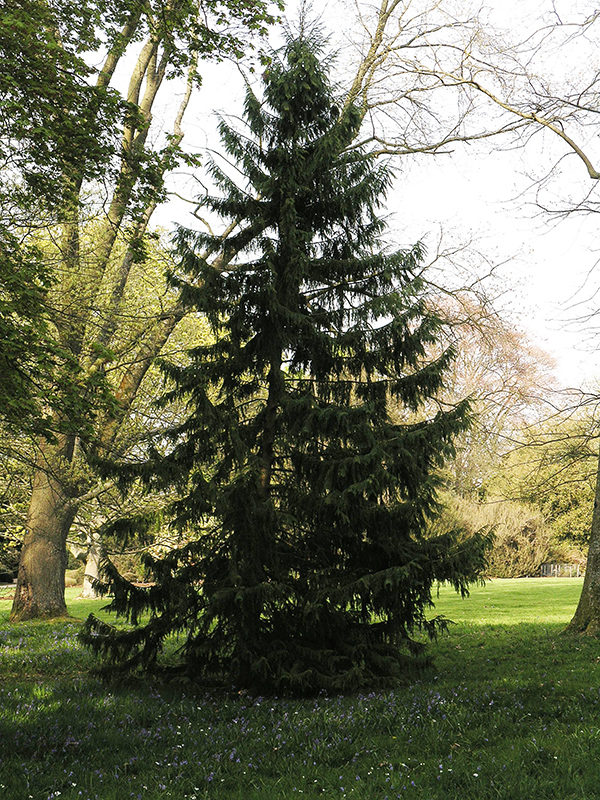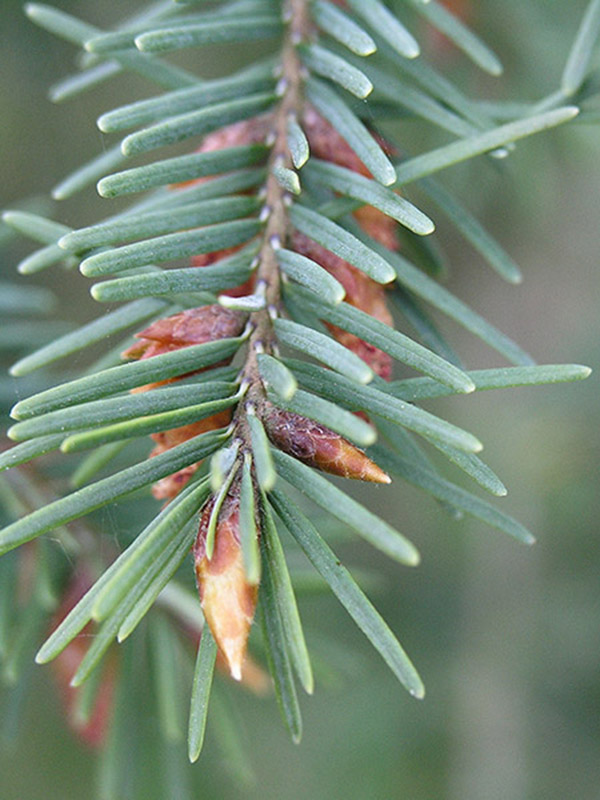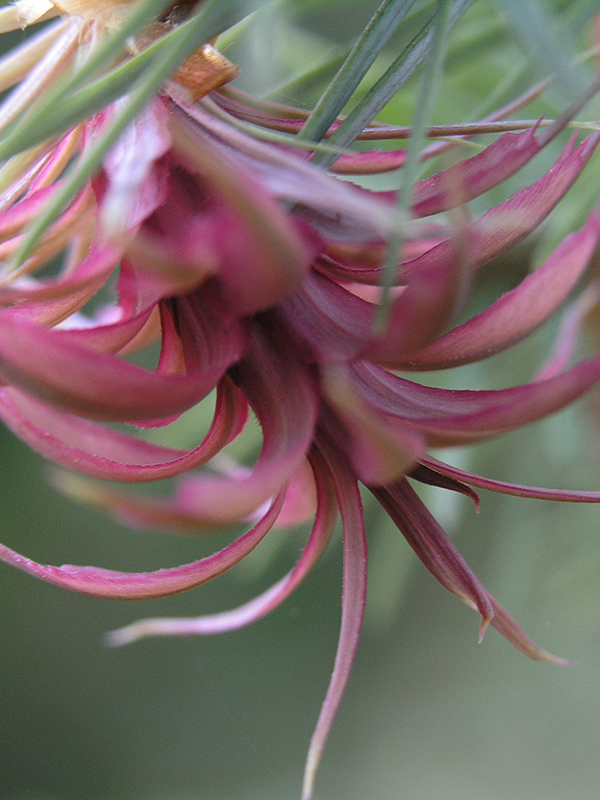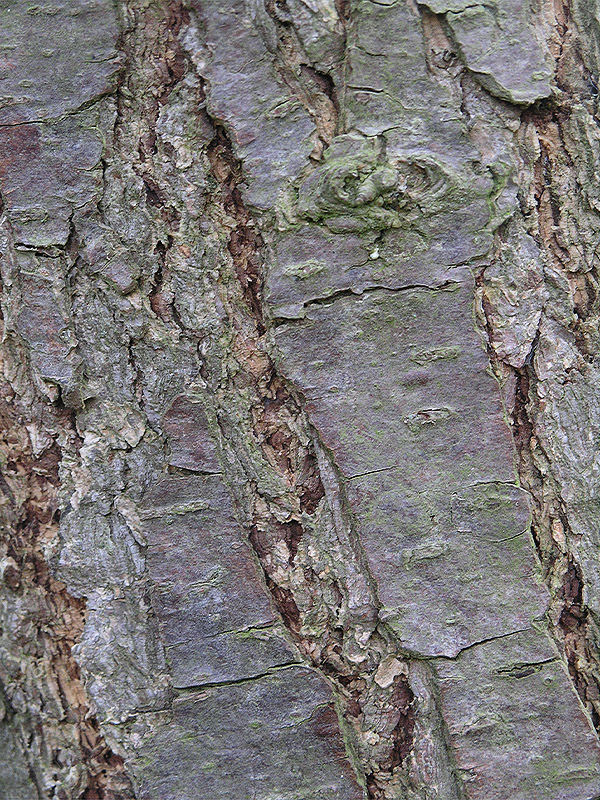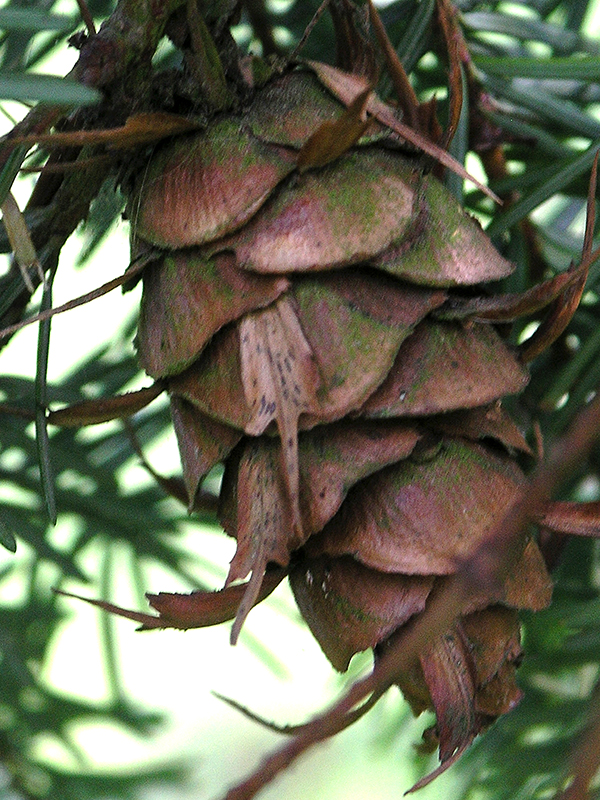| General Description | A tall broadly conical Douglas Fir, known for the largest cones in the Pseudotsuga genus. The very stiff needles and drooping branches give this tree a similar appearance to that of a spruce. |
| ID Characteristic | Large large cones (10 - 18 cm), consisting of spiralling bracts connected with resin. Bark is light brown/grey and made up of long, thin, bark platelets with a thick under layer of cork. The heartwood of this plant contains pockets of resin making it less stable and thus a poor choice for lumber. |
| Shape | Straight as juvenile and broadly conical in maturity. |
| Landscape | Not generally used in the landscape as it grows best in lean mountainous environments. However it is grown to protect watersheds. |
| Propagation | The seeds grow best in bare mineral soils in partial shade. At lower altitudes germination commences in late March, while at higher altitudes germination ends by late May. |
| Cultivation | Can tolerate a variety of soil requirements from bare mineral soil to deep litter. As a juvenile tree, partial shade is required and well-drained soil is preferred. |
| Pests | Forest fires are the greatest killers of this plant. It contracts few diseases due to its growing altitude. Seeds however often succumb to fungal diseases and may fail to germinate. |
| Notable Specimens | Mount St. Antonio, Southern California, United States of America. |
| Habitat | Grows in the mountains of Southern California at altitudes of approximately 1,500 m. Prefers bare mineral soils found typical of the mountainous landscape. |
| Bark/Stem Description | Deeply ridged, brownish-grey in colour. Consists of thin, woody platelets which are covered by a thick layer of cork. |
| Flower/Leaf Bud Description | Large heavy buds, obovate in shape and light brown in colour and generally 120 mm in length and often resinous. |
| Leaf Description | Dark blue-green in colour, needle shaped, approximately 2.5-5 cm in length. Leaves remain attached for five years and then are shed. |
| Flower Description | Circular clusters of long thin petals 3-5 cm in length and 90-120 mm wide. Petals are light pinkish-purple at the tips and graduate to a darker colour towards the throat of the flower. |
| Fruit Description | The female cones are 10-18 cm long, formed of bracts spiralling up a central stem connected with resin. |
| Colour Description | The foliage and bark remain the same colour year round, a dark blue green and light grey brown respectively. In September, the cones produced are a bright yellow and dry to a light brown by the start of October. Bright purple pink flowers bloom in March and persist onwards through mid-April. |
| Texture Description | It is a rough textured plant year round. |
